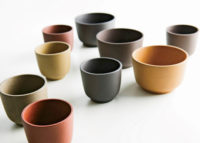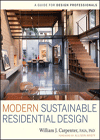The work of Office Kersten Geers David Van Severen (KGDVS) demonstrates the firm’s search to uncover the essence of architecture — testing the limits of what it means to be a boundary, an enclosure, an entrance, an opening. Often, that line of questioning leads to stark, abstract forms. “Of course there is abstraction in our work; it’s hard to deny that, although I sometimes try,” says partner Kersten Geers, laughing at his own contradiction. “But for us, abstraction is more a matter of being precise. I think when you get too many things going, you can become very imprecise.” Geers cites the architectural work of O.M. Ungers and Aldo Rossi, and the urban work of Alison and Peter Smithson and Auguste Perret as precedents. These are old questions — they are arguably the heart of architecture itself — but they have gone unconsidered for some time.
The project that displayed this agenda most clearly was the firm’s installation for the Belgian Pavilion at the 2008 Venice Biennale. Not content simply to design an architectural piece, Geers and Van Severen responded to the prevailing architectural (and architectural exhibition) culture of the past 15 years. Geers explains: “We thought, after 10 years of relentless bombarding with nonsensical diagrams and showcases of half-interested journalistic surveys of countries, it was good to show architecture in the most simple, visible, and radical way.” Their answer consisted of a 23-foot double wall, clad in galvanized steel, which created a new courtyard in front of the existing pavilion building. Visitors had to pass through the wall to access the courtyard and pavilion. After doing so, they found that the ground, inside and out, was covered in an even carpet of strewn confetti, with movable black metal chairs here and there. The architects titled the work After the Party, a reference to the celebration of the 100th anniversary of the Belgian Pavilion, but also a direct rejoinder to the pervasive architectural strategy that attempts to reduce complex cultural and historical terrain to a simplistic diagram. Office KGDVS practices in another, more elemental language. After the party, they seemed to say, there is only architecture.
But why must “only architecture” sometimes appear so cold? A photograph of a notary’s office entrance and reception designed by the firm in Antwerp (opposite), for instance, depicts a space that looks more like an art installation than a workplace. For that project — the first completed work of the firm — the client asked the architects to convert a dank, windowless space into a suitable entrance for the office, which takes up the rest of a historic town house. Office KGDVS’s solution consists of a mirrored pavilion with a series of fluorescent lights placed in the cavity behind the glass, producing an endless, deep space. But what would it be like to work there? Geers admits that the room was seen more as a manifesto of their architectural vocabulary — the client was lenient and allowed them to explore ideas that they would develop in subsequent work. Geers adds, “In our defense, the secretary is apparently very happy,” laughing again.
That humor is an integral part of Office KGDVS’s work. The partners are asking serious questions but are unafraid to undermine their own solutions. In their work, there is always a moment when the carefully constructed sense of order is uncloaked. At the Venice Biennale, this happened when visitors walked between the perimeter’s metal double wall, showing the scaffolding holding up the structure. In the notary’s office, the entrance from the hallway allows one to see the back of the glass, revealing the series of materials — cavity, then light, then foil, then glass — that creates the drifting, borderless landscape on the interior. Geers describes this sense of ambivalence: “On one hand, there is the desire of the architect to make the perfect universe. On the other hand, there are all of the tricks you have to perform to make that happen and that, in a sense, fail.” Creating that tension between reality and illusion makes the work of Office KGDVS so alluring, allowing us to see both sides of the curtain.





















